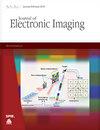Anomaly behavior detection analysis in video surveillance: a critical review
IF 1
4区 计算机科学
Q4 ENGINEERING, ELECTRICAL & ELECTRONIC
引用次数: 1
Abstract
Abstract. Anomaly detection is one of the most researched topics in computer vision and machine learning. Manual detection of an oddity in a video costs significant time and money, so there is a need for an autonomous detection system that can analyze the process and detect the anomaly in the majority of captured video datasets. Through an in-depth study on the recently published works on anomaly detection, a review is prepared to highlight the various tasks performed in abnormal behavior detection. Descriptions along with the pros and cons of various machine-learning and non-machine-learning techniques are discussed in depth. Similarly, more concentration is given to the generation adversarial network (GAN), and a comprehensive description of its design for achieving a better abnormality detection rate is provided. Moreover, a comparison of various state-of-the-art approaches on the basis of their methodologies, advantages, and disadvantages is given. We further quantitatively analyze some of the recent robust approaches at the frame level on the UCSD Ped1 dataset, with the GAN-based model achieving an astonishing performance. We provide various suggestions on how to further increase the performance of GAN for abnormal behavior detection in surveillance videos.视频监控中的异常行为检测分析:综述
摘要异常检测是计算机视觉和机器学习领域研究最多的课题之一。手动检测视频中的异常需要花费大量的时间和金钱,因此需要一个能够分析过程并检测大多数捕获视频数据集中的异常的自主检测系统。通过对最近发表的异常检测工作的深入研究,对异常行为检测中所完成的各种任务进行综述。深入讨论了各种机器学习和非机器学习技术的优缺点。同样,对生成对抗网络(GAN)给予了更多的关注,并对其实现更好的异常检测率的设计进行了全面的描述。此外,在其方法、优点和缺点的基础上,对各种最先进的方法进行了比较。我们进一步在UCSD Ped1数据集上定量分析了最近在框架级别上的一些鲁棒方法,其中基于gan的模型取得了惊人的性能。我们就如何进一步提高GAN在监控视频异常行为检测中的性能提出了各种建议。
本文章由计算机程序翻译,如有差异,请以英文原文为准。
求助全文
约1分钟内获得全文
求助全文
来源期刊

Journal of Electronic Imaging
工程技术-成像科学与照相技术
CiteScore
1.70
自引率
27.30%
发文量
341
审稿时长
4.0 months
期刊介绍:
The Journal of Electronic Imaging publishes peer-reviewed papers in all technology areas that make up the field of electronic imaging and are normally considered in the design, engineering, and applications of electronic imaging systems.
 求助内容:
求助内容: 应助结果提醒方式:
应助结果提醒方式:


